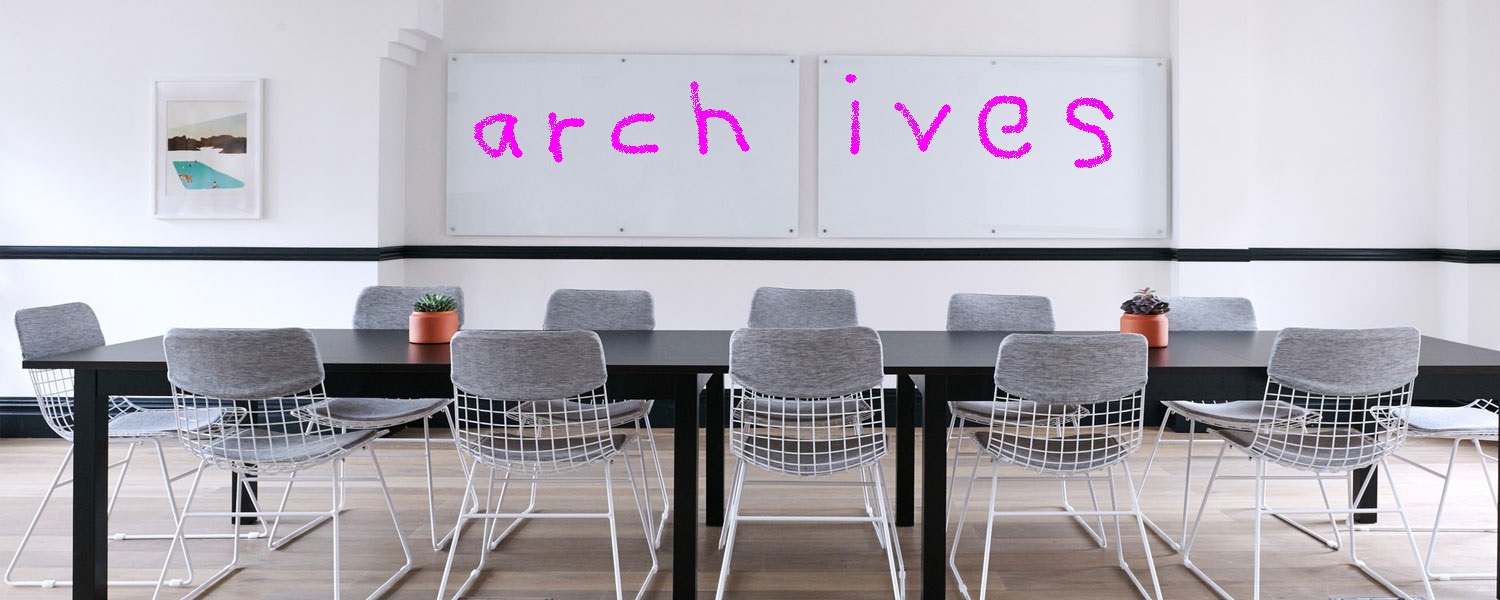

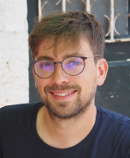
Abstract: Patch priors have become an important component of image restoration. A powerful approach in this category of restoration algorithms is the Expected Patch Log-Likelihood (EPLL) algorithm. EPLL uses a Gaussian mixture model (GMM) prior learned on clean image patches as a way to regularize degraded patches. Although it is very effective for restoring images, its high runtime complexity makes EPLL ill-suited for most practical applications. In this talk, I will present two contributions. The first one is Fast EPLL (FEPLL) which attains a speed-up of two orders of magnitude over EPLL while incurring a negligible drop in the restored image quality (less than 0.5 dB). To the best of our knowledge, FEPLL is the first algorithm that can competitively restore a 512x512 pixel image in under 0.5s for denoising, deblurring, super-resolution, inpainting and devignetting without CPU parallelization or GPU implementation. As a second contribution, we show that a generalized Gaussian mixture model (GGMM) captures the underlying distribution of patches better than a GMM and we propose solutions to embed such a GGMM into EPLL. Our evaluations indicate that the GGMM prior is consistently a better fit for modeling image patch distribution and performs better on average in image denoising tasks.
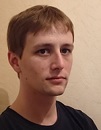
Abstract: La production d'images de synthèse, par exemple pour le cinéma d’animation, se base généralement sur des méthodes basées rayons telles que le path-tracing. Néanmoins, ce type de méthode est connu pour requérir des temps de calcul conséquents afin d’obtenir des images de haute qualité visuelle. Devant la hausse des demandes en terme de complexité (résolution d’images, taille des scènes, photoréalisme, etc.), de nombreux travaux de recherche ont pour but d’accélérer encore et toujours le processus. Ce séminaire montre que la connaissance de la topologie de la scène constitue un point-clef permettant de réduire les temps de rendu. La première partie présente un type de structure accélératrice particulier, la partition spatiale contrainte et convexe, qui exploite les informations topologiques de la scène pour accélérer le rendu. La deuxième partie propose une méthode permettant de réaliser des pré-calculs de visibilité pour accélérer le calcul de l’éclairage global d’une scène. Enfin, la troisième partie présente diverses pistes de recherche futures.
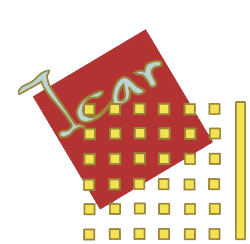
Abstract: La reconstruction 3D consiste à acquérir des images 2D d’un objet, et à s’en servir pour en estimer un modèle 3D. La méthode de reconstruction développée ici est basée sur la modélisation par squelette. Cette méthode a l’avantage de renvoyer un modèle 3D qui est un objet virtuel complet (i.e. fermé) et aisément éditable, grâce à la structure du squelette. Enfin, l’objet acquis n’a pas besoin d’être texturé, et entre 3 et 5 images sont suffisantes pour la reconstruction. Nous développons dans un premier temps les aspects 2D de l'étude, dans laquelle deux contributions sont proposées : la première contribution concerne l'estimation d'un squelette 2D sans bruit, c'est-à-dire minimisant le nombre de branches peu informatives dans la structure squelettale. La seconde contribution consiste à estimer un type particulier de squelette, le squelette perspectif, qui correspond à la projection perspective d'un objet 3D. Dans un second temps, nous développons les aspects 3D de l'étude, avec trois contributions principales. Pour ce faire, nous supposons que nous avons plusieurs images d'un même objet, acquises sous différents points de vue calibrés. Chaque image servira à estimer la projection perspective du squelette 3D de l'objet, sous différents angles. L'association des branches 2D sur les différentes images va ainsi permettre la triangulation de chaque branche 3D de l'objet. Pour ce faire, la première contribution proposée est l'estimation de la topologie du squelette 3D, à partir de la topologie des squelettes perspectifs. Ensuite, la seconde contribution est la triangulation des différentes branches 3D, en associant les paramétrisations de chaque branche 2D. Ces deux contributions permettent l'estimation d'un squelette de type curviligne, et sont utiles à la reconstruction d'un objet constitué de parties tubulaires. En extension de ces travaux, et pour généraliser la reconstruction par squelette, nous proposons une dernière contribution, permettant de prendre en compte les parties surfaciques du squelette d'un objet.
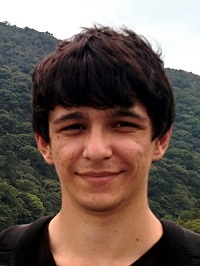
Abstract: Ces dernières années, la quantité de données visuelles produites par divers types de capteurs est en augmentation permanente. L’interprétation et l’indexation automatique de telles données constituent des défis importants dans de nombreux domaines d'application. Dans ce contexte, la forme des objets d'intérêt composant les images, ainsi que les relations spatiales structurelles entre ces différents objets, jouent des rôles importants dans notre perception et interprétation de ces données. Dans ce séminaire, je présenterai mes travaux de recherche en analyse d'images à partir de caractéristiques de relations spatiales et de formes. Dans un premier temps, j'exposerai mes travaux sur la modélisation et l'apprentissage de relations spatiales ; avec d'une part un descripteur de configurations où les objets sont entrelacés, et d'autre part une stratégie d'apprentissage par sacs de relations spatiales pour la classification. Dans un second temps, je proposerai un aperçu de mes recherches actuelles sur l'analyse de formes, avec notamment un apprentissage non-supervisé de dictionnaires parcimonieux de formes élémentaires, ainsi qu'une approche de transfert d'apparence fondée sur des séquences de déformations morphologiques.

Abstract: Most inverse problems, and many learning tasks, are addressed through variational formulations. In this framework, prior knowledge on the solutions are conveniently enforced by specifically designed regularization terms. Most efficient regularizers are nonsmooth, and proximal splitting algorithms remain today the most appropriate minimization methods to tackle this kind of problems. I try to make a panorama of which class of method should be used in practice, depending on the structure and properties of the composite objective functional at hand; advertising in the process the generalized forward-backward splitting I devised some years ago. Then, I briefly discuss some variants, mainly for acceleration purpose. In a second part, I will focus on the graph total variation regularization. I present an extension of the cut-pursuit algorithm of Landrieu and Obozinski (2017), which is a working-set approach combining continuous and combinatorial optimization. Now able to tackle nondifferential parts beside the total variation in the objective functional, the results are so promising that it might revitalize the use of the total variation in large-scale settings. Landrieu, L. & Obozinski, G. Cut Pursuit: Fast Algorithms to Learn Piecewise Constant Functions on General Weighted Graphs SIAM Journal on Imaging Sciences, 2017, 10, 1724–1766.

Abstract: Afin de présenter de façon synthétiques mes activités de recherche, j’aborderai deux contributions significatives de mes travaux dans le domaine de la reconstruction 3D en environnement contraint. - Méthodes de reconstruction 3D par quantification du flou optique : Je traiterai, dans cette première partie de ma présentation, du problème d’estimation de l’échelle absolue d’une scène en vision passive mono focale. Contrairement aux approches de reconstruction 3D géométriques telles que les méthodes « Structure-from-Motion » (SfM), les méthodes « Shape-from-Focus » (SfF) et « Depth-from-Defocus » (DfD) permettent l’estimation de l’échelle absolue d’une scène en s’appuyant sur l’analyse de l’information de flou optique présent dans deux ou plusieurs images de celle-ci. Ces méthodes reposent néanmoins sur de fortes contraintes pratiques ; i/ les méthodes DfD requièrent le contrôle des paramètres internes de la camera, ii/ les méthodes SfF requièrent le contrôle de la pose de la camera. Ces contraintes les rendent inadaptées à de nombreuses applications telles que l’imagerie endoscopique. Je présenterai une méthode originale permettant de s’affranchir de ces contraintes. Cette dernière exploite la redondance de l’information de flou optique au sein d’une vidéo correspondant à un mouvement d’approche de la caméra vis-à-vis d’un objet d’intérêt. Un premier module permet le suivi d’une région d’intérêt ainsi que l’estimation conjointe du flou optique relatif entre deux images successives de la séquence. Un second module permet l’intégration de l’information de flou relative ainsi que l’ajustement de ces mesures à un modèle de flou théorique. Enfin, le point de rupture de netteté, défini comme l’image à partir de laquelle la région d’intérêt considérée apparait flou, peut être extrait de façon robuste. Considérant un système optique mono focale, le point de rupture de netteté correspondant à une distance singulière pouvant être calibrée. L’extraction du point de rupture de netteté permet par conséquent d’estimer l’échelle de la scène observée. - Méthodes de reconstruction 3D en milieu immergé : J’aborderai, dans la seconde partie de ma présentation, le problème de reconstruction 3D monoculaire en milieux sous-marin. Plus particulièrement, je présenterai une méthode dites de « Refractive Structure-from-Motion » (RSfM) permettant la reconstruction 3D d’environnements immergés. Si le modèle sténopé est généralement considéré en imagerie sous-marine, la réfraction induite par le changement de milieu (i.e. à l’interface d’étanchéité du dispositif optique) induit un biais géométrique significatif qui ne peut être ignoré dans le cadre d’applications de reconstruction 3D. Considérant un modèle de caméra sténopé protégé du milieu extérieur par une interface d’étanchéité, le modèle optique géométrique de formation des images définit une caméra axiale. Il est alors possible d’exprimer les relations de la géométrie réfractive épipolaire sous la forme d’une matrice fondamentale généralisée. Cette formulation explicitée, je présenterai une méthode RSfM robuste reposant sur le raffinement de l’estimation initiale obtenue à l’aide de l’approche SfM (raffinement de l’estimation obtenue en faisant l’hypothèse du modèle sténopé). Je présenterai une extension multi-vues naturelle de cette approche s’appuyant directement sur la définition des tenseurs tri-focaux.
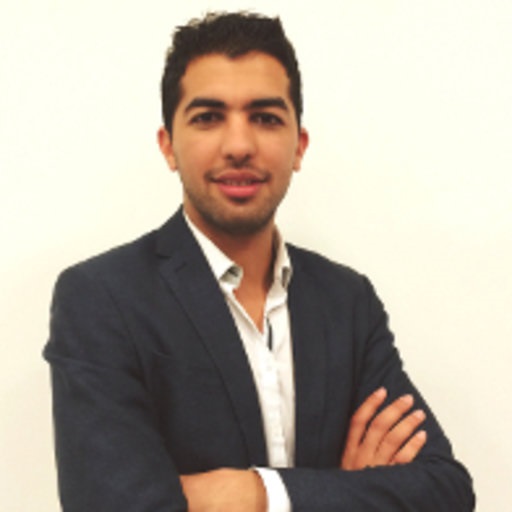
Abstract: Dans cette présentation, j’exposerai un résumé de mes travaux de recherche associés à trois axes différents: la saillance visuelle des maillages 3D, l’évaluation objective de la qualité perceptuelle des maillages 3D et la détection et caractérisation de bifurcations dans des vasculatures cérébrales 3D. La première partie aura pour but de présenter une approche multi-échelle de détection de la saillance des maillages 3D (colorés ou non colorés) basée sur des descripteurs locaux sous forme de patchs de taille adaptative remplis par un champ local des hauteurs/couleurs de projections servant à caractériser la surface du maillage. Pour évaluer la pertinence du modèle de saillance colorimétrique, une base de maillages colorés construite sera décrite. Ensuite, deux applications de ce modèle de saillance seront présentées. La deuxième partie de la présentation concernera l’évaluation objective de la qualité perceptuelle des maillages 3D non colorés. Je présenterais deux métriques d’évaluation avec référence et sans référence de la qualité basées sur la saillance visuelle. Dans cette problématique, la carte de saillance multi-échelle servira de base pour l’extraction des informations structurelles du maillage à évaluer. La troisième partie concerne l’analyse des images médicales 3D sous forme de volumes (stack). L’objectif est de détecter et caractériser automatiquement des bifurcations dans des vasculatures cérébrales 3D pour la prédiction des anévrismes intracrâniens. Je présenterais l’approche utilisée pour répondre à cette problématiques et quelques résultats sur des images de cerveau de souris et d’êtres humains.
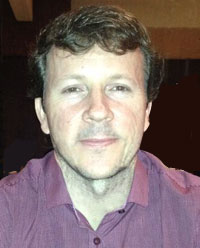
 provenance and phylogeny (43 Mb)
provenance and phylogeny (43 Mb)
Abstract: In this talk, we will discuss problems associated with synchronizing specific events in space and time (X-coherence), fact-checking, and mining persons, objects and contents of interest from various and heterogeneous sources including — but not limited to — the internet, social media and surveillance imagery. For that, we seek to harness information from various media sources and synchronize the multiple textual and visual information pieces around the position of an event or object as well as order them so as to allow a better understanding about what happened before, during, and shortly after the event. After automatically organizing the data and understanding the order of the facts, we can devise and deploy solutions for mining persons or objects of interest for suspect analysis/tracking, fact-checking, or even understanding the nature of the said event. Additionally, by exploring the possible existing links among different pieces of information, we aim at further designing and developing media integrity analytics tools to hint at existing forgeries, sensitive content (e.g., violent content, child pornography), and spreading patterns of multimedia objects online. With demanding and sophisticated crimes and terrorist threats becoming ever more pervasive, allied with the advent and spread of fake news, our objective is to use the developed solutions to help us answering the four most important questions in forensics regarding an event: “who,” “in what circumstances,” “why,” and “how,” thus identifying the characteristics and circumstances in which an event has taken place.
Nano-bio: Anderson Rocha is an associate professor at the Institute of Computing, University of Campinas (Unicamp), Brazil. His main interests include Digital Forensics, Reasoning for Complex Data and Machine Intelligence. He has actively worked as a program committee member in several important Computer Vision, Pattern Recognition, and Digital Forensics events and is an associate editor of numerous top-tier international journals such as the IEEE Transactions on Information Forensics and Security (T.IFS) and the IEEE Security & Privacy Magazine. He is an elected affiliate member of the Brazilian Academy of Sciences (ABC), the Brazilian Academy of Forensic Sciences (ABC) and a two-term elected member of the IEEE Information Forensics and Security Technical Committee (IFS-TC). He is a Microsoft Research and a Google Research Faculty Fellow, important academic recognitions given to researchers by Microsoft Research and Google, respectively. In addition, in 2016, he has been awarded the Tan Chin Tuan (TCT) Fellowship, a recognition promoted by the Tan Chin Tuan Foundation in Singapore. He has been the principal investigator of a number of research projects in partnership with funding agencies in Brazil and abroad as well as national and multi-national companies having already deposited and licensed several patents. Finally, he is currently the Associate Director of the Institute of Computing at Unicamp, Brazil. Finally, Prof. Rocha has been recently elected the IEEE Information Forensics and Security Technical Committee (IFS-TC) Vice-Chair for the 2018 term.
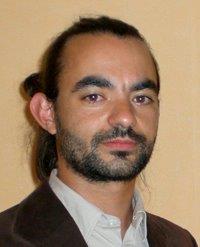
Abstract: What information one has to transmit when the receiver has a different objective from the sender ? Originally in the Economics literature, the problem of ``Strategic Information Transmission'' arises in decentralized networks when the users are considered as players, that choose autonomously a transmission scheme in order to maximize their own utility function. The key difference with conventional communication paradigm is that the meaning of the information symbol has to be considered carefully. Indeed, each information might have a different impact on the utility functions of the users, hence it has to be compressed and transmitted accordingly. Instead of ensuring reliable transmission, the goal of the encoder is to manipulate the posterior beliefs of the decoder in order to influence its action. We provide a unified approach to this problem by generalizing the Rate-Distortion results in Information Theory and the Persuasion results in Game Theory. By using the tool of ``Empirical Coordination'', we characterize the optimal ``Strategic Transmission’’ in terms of a concavification over the space of the posterior beliefs, under a mean entropy constraint.
Bio: Maël Le Treust earned his Diplôme d’Etude Approfondies (M.Sc.) degree in Optimization, Game Theory & Economics (OJME) from the Université de Paris VI (UPMC), France in 2008 and his Ph.D. degree from the Université de Paris Sud XI in 2011, at the Laboratoire des signaux et systèmes (joint laboratory of CNRS, Supélec, Université de Paris Sud XI) in Gif-sur-Yvette, France. Since 2013, he is a CNRS researcher at ETIS laboratory UMR 8051, Université Paris Seine, Université Cergy-Pontoise, ENSEA, CNRS, in Cergy, France. In 2012, he was a post-doctoral researcher at the Institut d'électronique et d'informatique Gaspard Monge (Université Paris-Est) in Marne-la-Vallée, France. In 2012-2013, he was a post-doctoral researcher at the Centre Énergie, Matériaux et Télécommunication (Université INRS ) in Montréal, Canada. From 2008 to 2012, he was a Math T.A. at the Université de Paris I (Panthéon-Sorbonne), Université de Paris VI (UPMC) and Université Paris Est Marne-la-Vallée, France. His research interests are strategic coordination, information theory, Shannon theory, game theory, physical layer security and wireless communications.
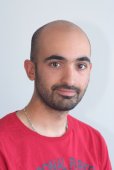
Abstract: Ronan will present his works in the fields of computer vision and pattern recognition, with a focus on part-based methods. Parts are mid-level features that are learned from data. They are generative and distinctive, meaning that they occur often in some part of the training data and rarely in the rest. Once parts are learned, they are aligned to produce global representations and perform classification. These representations outperform global CNN descriptions. The most recent work allows to learn parts in an unsupervised fashion. In this work parts are applied to image classification and retrieval, but could be applied to other recognition problems.
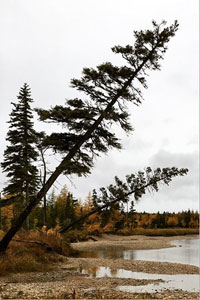
Abstract: Cette présentation a pour but de vous exposer les travaux que j’ai réalisé autour de l’algorithme de Dehnen, un algorithme de simulation astrophysique qui simule le comportement de galaxies. Cet algorithme est basé sur une solution de double traversée d’arbre afin de réduire la complexité de cet algorithme en O(N) (au lieu de O(N^2) pour les solution n-core traditionnelles). Les travaux que je vous présenterai mettront en évidence les optimisations algorithmiques mises en place afin de permettre de paralléliser cet algorithme mais également de permettre d’utiliser cet algorithme sur des infrastructures many-core. Ces travaux ont donné lieu à la production d’une application pfalcon (implémentation parallèle de l’algorithme de Dehnen).
Abstract: Today we are facing the challenges of carefully manipulated images, which can easily fool our human naked eyes. In order to fight against such image manipulation, forensics has emerged as a powerful image authentication tool. Conversely, image anti-forensics attacks forensic algorithms in order to urge the development of more trustworthy forensics. This talk firstly presents some contributions to image anti-forensics of hiding image processing history of JPEG compression and median filtering. The anti-forensics study shows that image forensic performance decreases when the modified area is getting smaller in the image. Such observation urges the fine-grained image forensic detection, which requires good forensic classification performance on very small image blocks. To this end, we adopt Gaussian mixtures to model image blocks. Then, image forensics is performed by likelihood ratio test or trained classifier using Fisher scores. The effectiveness of the proposed methods are validated on both classical images and a new type of multimedia — High Dynamic Range images.
Abstract: Today we are facing the challenges of carefully manipulated images, which can easily fool our human naked eyes. In order to fight against such image manipulation, forensics has emerged as a powerful image authentication tool. Conversely, image anti-forensics attacks forensic algorithms in order to urge the development of more trustworthy forensics. This talk firstly presents some contributions to image anti-forensics of hiding image processing history of JPEG compression and median filtering. The anti-forensics study shows that image forensic performance decreases when the modified area is getting smaller in the image. Such observation urges the fine-grained image forensic detection, which requires good forensic classification performance on very small image blocks. To this end, we adopt Gaussian mixtures to model image blocks. Then, image forensics is performed by likelihood ratio test or trained classifier using Fisher scores. The effectiveness of the proposed methods are validated on both classical images and a new type of multimedia — High Dynamic Range images.
Bio: Andrew Murray received the B.S. degree in mechanical engineering from the Rose-Hulman Institute of Technology in 1989, and the M.S. and Ph.D. degrees in mechanical engineering from the University of California, Irvine in 1993 and 1996, respectively. In 1997, he joined the Department of Mechanical & Aerospace Engineering at the University of Dayton as an Assistant Professor, became an Associate Professor in 2003, and a Professor in 2011. He is a Co-Director of the Design of Innovative Machines Lab (DIMLab) where the research in kinematic synthesis theory and machine design includes shape-changing mechanisms with applications in variable geometry extrusion dies, novel devices that utilize strain-energy in automobiles, and accurate estimation and tracking of the center of mass of complex systems. He also has a long-standing collaboration with researchers at the Laboratoire d’ Informatique, de Robotique et de Microélectronique in Montpellier, France. Dr. Murray is a Fellow of ASME. He won the highest teaching award offered by his university in 2013. He was General Program Chair of the ASME International Design Engineering Technical Conferences in 2010 and has served as an Associate Editor for the ASME Journal of Mechanisms and Robotics since it was founded in 2008. Please visit DIMLab to learn more about the research.
Abstract: Dans cet exposé, je m’intéresse aux liens que l'on peut tracer entre la notation de la mise en scène théatrale, la
reconnaissance d'actions par analyse vidéo, et l'animation procédurale d'acteurs virtuels.
Je pose la question de la mise en scène sous l’angle de la théorie de la notation de Goodman, qui fixe des contraintes syntaxiques et sémantiques
interessantes à la fois pour l'analyse et la synthèse des mouvements d'acteurs. Ceci m'amène à proposer un schéma de notation restreint à un petit
nombre d’actions scéniques reconnaissables visuellement, pouvant faire l’objet d’une transcription automatique par ordinateur à partir d’enregistrements
vidéo.
Je présente quelques résultats obtenus au cours de deux projets de recherche en cours, qui visent à démontrer expérimentalement la possibilité d’une
telle transcription et son utilité pour analyser et documenter le travail des répétitions théâtrales. Je termine par quelques perspectives d'
applications dans d'autres domaines, y compris en animation 3-D et en interaction homme-machine.
Come and discover research work of local companies in the fields of Image and Video Game. Three tuesday in a row from 18:30 until 20:00 at the University of Montpellier in room SC 12.01
Download the presentation
Abstract: Nous présenterons les différentes problématiques concernant la visualisation et le rendu de scènes
comportant un grand nombre de primitives graphiques animées, depuis les considérations techniques, comme le chargement rapide de s
cène complexe, à celles du rendu comme pour l'antialiasing. Nous aborderons ensuite un autre type de complexité de scène : les volumes.
Depuis une modélisation complexe jusqu'à un rendu le plus réaliste possible, nous détaillerons les méthodes existantes et notre approche
temps réel.
Download the presentation
Abstract: L’objectif intrinsèque de tout algorithme d’évaluation de la qualité d’une image est d’aboutir à un schéma de notation
objectif pour lequel l’erreur de prédiction est minimale. Cette erreur de prédiction, qui est une mesure de performance, peut être considérée comme
une fonction de représentativité naturelle des caractéristiques utilisées pour prédire la qualité. La théorie des statistiques de scènes naturelles
(SSN) suggère que notre système visuel s’est adapté au cours de l’évolution et de notre développement aux statistiques du monde environnant.L’idée
retenue est de pouvoir définir des caractéristiques représentatives des structures de l’image dont les statistiques évoluent en fonction du type de
dégradation et de la puissance de cette dernière. Cependant, l’efficacité d’un modèle est intrinsèque à la qualité des caractéristiques utilisées.
Cela induit la sélection de caractéristiques suffisamment pertinentes pour mener à un outil fiable d’évaluation de la qualité des images.L’approche
présentée consiste à utiliser des paramètres d’un modèle généralisé des statistiques de scènes naturelles afin de définir de nouvelles caractéristiques,
dont la distribution sera modélisée par un modèle probabiliste généralisé quantifiant la qualité de l’image. Les résultats obtenus montrent que
l’approche retenue permet d’obtenir une très forte corrélation entre les scores ainsi prédits et les scores des observateurs humains. L'utilisation
de cette métrique dans le cadre de la biométrie sera également présentée. De la qualité de la mesure des données biométrique, dépend la qualité du
système d'identification et de reconnaissance biométrique. Les résultats montrent également que la métrique est plus pertinente que les métriques
dédiées aux données biométriques, en terme de prédiction de la qualité.
Download the presentation
Abstract: In this talk, the watermarking methods based on feature point processing will be introduced. Several feature point
detection techniques will be discussed, including geometrical feature extraction methods and invariant image processing approaches. The problems
of synchronization in presence of insertions and deletions will be defined and typical synchronizing methods with the use of error correcting
coding will be presented. The new scheme with concatenated error detecting and correcting codes and its application in feature-based watermarking
will be discussed.
Bio: Boris A. Assanovich was born in Belorussia (former USSR), received his M.S. degree in Radiophysics and Electronics in 1984 from YK Grodno State University and Ph.D. degree in Informatics and Engineering from FS Gomel State University in 2002 in Belarus. He was a fellow at St. Petersburg Institute of Telecommunication and a researcher at System Development Lab in Moscow, Russia. He taught at Physics and Technical Department of YK Grodno State University, where he held a position of Associate Professor in 2004. He was a visiting researcher at Jagiellonian University in Poland and a visiting professor at Chonbuk National University in South Korea. He has published more than 50 papers in the area of signal processing source and error correcting coding. His current research interests include joint source-channel coding, new generation watermarking systems, computer vision, multimedia and intelligent systems.
Abstract: In this talk, several feature extraction techniques will be introduced, including algebraic feature extraction and geometrical feature extraction methods. Typical applications of these feature extraction methods will be presented including face recognition, image fusion, image retrieval, and target tracking, etc. The main aim of this talk is to introduce my main work in pattern recognition and computer vision, which hopefully ignites discussions, future talks for specific topic and future collaborations.
Bio: Xiao-Jun Wu received his B.S. degree in mathematics from Nanjing Normal University, Nanjing, PR China in 1991 and M.S. degree in 1996, and Ph.D. degree in Pattern Recognition and Intelligent System in 2002, both from Nanjing University of Science and Technology, Nanjing, PR China, respectively. He was a fellow of United Nations University, International Institute for Software Technology (UNU/IIST) from 1999 to 2000. From 1996 to 2006, he taught in the School of Electronics and Information, East China Shipbuilding Institute (Now renamed as Jiangsu University of Science and Technology) where he was an exceptionally promoted professor. He joined Jiangnan University in 2006 where he is a full professor, and he also takes charge of project funding of Jiangnan University from different levels of government. He won the most outstanding postgraduate award by Nanjing University of Science and Technology. He has published more than 150 papers in his fields of research. He was a visiting postdoctoral researcher in the Centre for Vision, Speech, and Signal Processing (CVSSP), University of Surrey, UK from 2003 to 2004, under the supervision of Professor Josef Kittler. His current research interests are pattern recognition, computer vision, fuzzy systems, neural networks and intelligent systems. M Xiao-Jun Wu est actuellement au LGI2P à Nîmes où il travaille avec Philippe Montesinos. Il a, avant cela, travaillé pendant 2 ans dans l'équipe de Josef Kittler de l'Université de Surrey.
Vous voulez découvrir l'univers de l'Image ou en savoir un peu plus ?
Pour la dixième année consécutive, le module Image de l'école doctorale I2S vous propose un programme composé de 6 séances avec des intervenants différents.
Ce module s'adresse aux doctorants et aux chercheurs intéressés par les techniques de traitement des images, mais aussi accessible également aux étudiants de master souhaitant se former dans ce domaine.
Cette année, comme l'an passé, les 6 séances du module auront lieu sur 3 jours du lundi 2 avril au mercredi 4 avril 2012,
en salle 167, campus St Priest, bâtiment 2 à Montpellier.
Benjamin GILLES, actuellement en post-doc chez Tecnalia/Fatronik France, travaille dans le cadre
du projet ANR Sohusim à l'INRIA Grenoble (EPI EVASION).
Abstract: I will present an overview of the research I have done in collaboration with
the University of Geneva, the University of British Columbia and the LJK/INRIA lab in Grenoble during my
phd and post-docs. It deals with the study of the human musculoskeletal system using 3d deformable models.
The goal of this research is to reconstruct and simulate patient-specific functional models of
articulations for diagnosis and treatment planning purposes. I will introduce some methods to extract the
morphology and the kinematics from medical images, mostly MRI, based on template morphing in which prior
information about shape and motion is incorporated. Then, I will talk about a new biomechanical simulation
method that combines the flexibility of skinning deformation, popular in graphics, and the accuracy of
continuum solid mechanics. Case studies on the human lower and upper limbs will be presented.
Watermarking is known to be a very difficult task. Robustness, Distortion, Payload, Security, Complexity are many constraints to deal with. When applied to a video stream, the difficulty seems to be growing in comparison to image watermarking. Many classical non malicious manipulations of a compressed stream may suppress the embedded information. For example, a simple recompression of a DVD movie (MPEG2 compression) to a DivX movie will defeat most of the current state-of-the-art watermarking systems. In this talk, we will expose the different techniques in order to watermark a video compressed stream. Before, we will present the H.264/AVC standard which is one of the most powerful video-compression algorithms. The discussion about video watermarking will be illustrated with H.264 streams. Deadlocks will be discussed, and then the possible extensions and the future applications will conclude the presentation.
None
all seminars
Groupe de travail de l'équipe Aritméthique Informatique
Module image